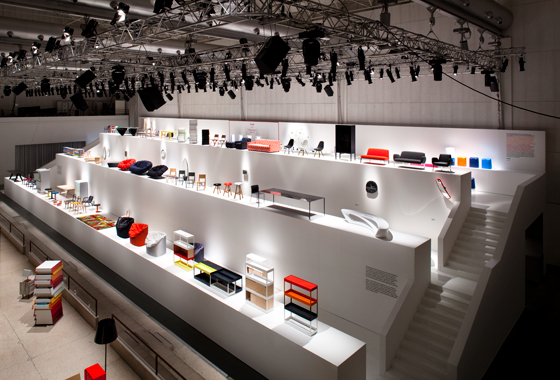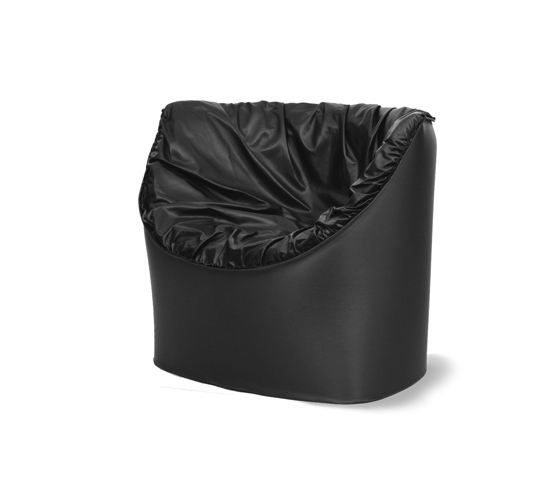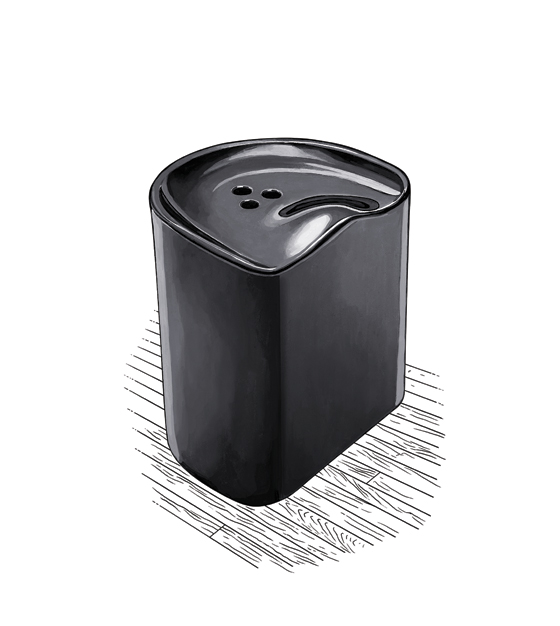The Milan Conversations: Part I – Konstantin Grcic and Sebastian Wrong
Texte par Simon Keane-Cowell
Zürich, Suisse
27.04.10
As the metaphoric dust settles following another Milan Salone del Mobile (not to be confused with the ash from that pesky Icelandic volcano, which did its best to keep the great and the good of the international design press stranded in Italy), Architonic brings you a series of engaging interviews with some of the most influential designers working internationally. We're calling them the Milan Conversations.
The plethora of design blogs and design journals available to us these days means that you can get a pretty good idea of what's been launched at any particular design fair without packing that suitcase with comfortable shoes and business cards. The real value of going to somewhere like Milan are the encounters that you have, not with new products but with other people. It's probably the design industry's most productive and rewarding way of exchanging information, ideas and enthusiasm. It's about inspiration.
In this first installment of the Milan Conversations, Architonic talks to Compasso d'Oro-winning, Munich-based Konstantin Grcic about his new collaboration with leading British design brand Established & Sons (whose show, in an indoor pelota court, was monumental in scale) and how he had to learn to let go. We also talk to Sebastian Wrong, founding member and design development director of said brand, about irony, sustainability and the thinking behind the company's new own-label collection.
View of Established & Sons installation at La Pelota, Milan, 2010; photo Peter Guenzel
.....
KONSTANTIN GRCIC – 'I surrender'
It seems quite fitting that we're standing in a pelota court, as the Established & Sons brand seems to express the idea of play. Humour and irony appear to run through it.
And the idea of competitiveness. That’s what I like about them. They are really showing muscles. They are only six years old and they’re renting a space that’s larger than any of the traditional companies that have been around for decades. There’s something like a sporty ambition that they have, which fits the space as well.
Konstantin Grcic: 'The decision to work with Established & Sons was the joy of new territory. Something completely outside my other experiences.'
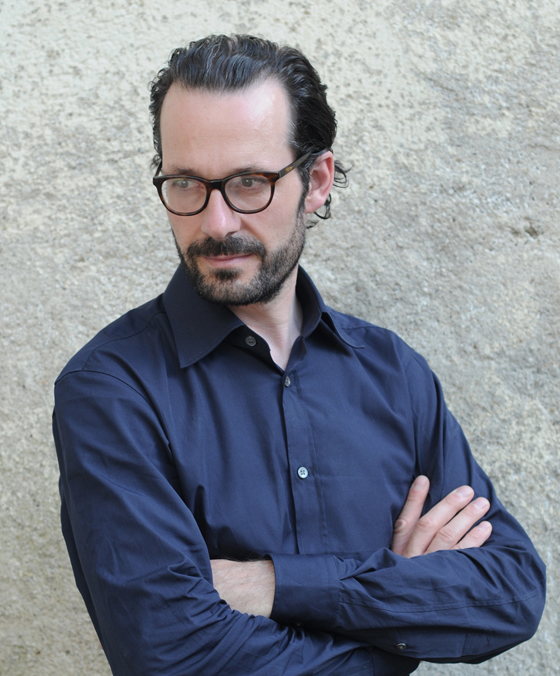
Konstantin Grcic: 'The decision to work with Established & Sons was the joy of new territory. Something completely outside my other experiences.'
×Your work has in the past often shown a strong sense of analysis and rigour, and form is well considered. What was it like working for the first time with a manufacturer whose products are sometimes more playful, more relaxed? Was the process different?
Yes. The only reason for starting a collaboration with a new company is to do something new. The decision to work with Established & Sons was the joy of new territory. Something completely outside my other experiences. Who the company are and what they've done over the years forms one pool of information for me. The other one is purely my own: what have I done and where do I see a niche of new territory for myself. Working with textiles, working with soft materials. Exploring a more organic language of things. Comfort in a totally different way than I normally treat comfort. Or discomfort. All of this was important for me as a consideration. I like that. A designer should be considerate in many different ways. Work is not something you just pour out. There's always context to it. The company you work with is a context. You have your own context. Even the year 2010 is different from what I would have done last year.
'Crash' chair by Konstantin Grcic for Established & Sons, 2010
And all of this informs the process and the final product. And in terms of the process, what did you learn from working on this product that was new to you?
Well, I learnt that I was completely wrong about using fabric in the first place. Underneath here is a beautifully moulded foam body. The fabric for me was the paint that goes on top of the foam body. The reality, of course, is that fabric has its own structure and behaviour and you can't just mould it seamlessly over it. Especially with this inner part which it goes over. Trying to create a seamless, creaseless fabric cover was impossible. And I was fighting for that, but then realised that this was a lost fight.
The fabric got the better of you.
Indeed. But it was for the better. There came a point where I thought 'I surrender. I accept that fabric is something completely different.' Then you notice that how we are used to fabric is all about that. Something uncontrollable and free. And this is really an experience I went through and I think the result is so much nicer than I anticipated.
Which would have been a perfectly defined and fixed silhouette.
Exactly.
There's something quite brave about giving in and letting go.
It was actually liberating to say 'This is actually nice.' It's much more about the material. It's treating form in a very beautiful way. I'm happy with it as it is now. But, for me, the story continues. We're just starting the collaboration. I want to go somewhere from here. Pick up on what we've learned and do more. What that is I don't know yet. For me it's interesting that one of the directors of Established & Sons, Sebastian Wrong, is completely in charge of the technical development of the products. Importance is given to technical innovation, the process.
'Blow' table by Konstantin Grcic for Established & Sons in collaboration with Venini, 2010
I love design that shows intelligence and consideration. I fetishise objects as I guess a lot of us do who inhabit this professional world. But you come to Milan, it's so full of stuff that I get slightly depressed, from a consumption and environmental point of view. It seems like the rate at which products are designed and developed is every increasing. Is it possible to resolve this tension, do you think, between the excitement one can feel about material culture and the feeling of despondency the current pace of production and consumption can affect?
What you say is true. But if you'd spoken to someone, say, in the 1970s, they would say exactly the same thing: 'If feels like every time you come to the Salone del Mobile, there's more and more and more.' Of course the 70s were boom years and now I think we should consider more carefully the sense of what we are doing. Our outlook in the future has to be much more intelligent and considered. But I think industry is quite an animal and just to reject, to say 'I'm going to stop working, I'm going to stop designing', that's not the answer.
What is the answer, do you think?
I think from within the process we can change things. We still have to be inside the process. Within it, we need to be making intelligent decisions, which can make real change. I'm very hopeful that we can. We are already starting to see things like that around.
Well, that's certainly heartening. To use your chair as a metaphor, the idea of relinquishing, of surrendering, visiting Milan is somewhat like that. There's no way you can see everything, or understand everything, or process it. You take away some impressions.
You are selective in the same way that you are selective in life. That's the way it is. You can only do certain things. But there's a stimulus here. Because everything is exposed here, we see things that we would otherwise have to look for deliberately. The chances would be slim of just coming across them. That's something cool.
Thanks very much for talking to us.
.....
SEBASTIAN WRONG: 'There's no point contributing to an already excessive world of chairs and products unless...'
My first impression of this year's Established & Sons installation is that it's more Rome than Milan. Colosseum-like. It's very classical, almost museum-like in the way that the products are displayed in white plinths. What's the concept behind this?
Yes, this year the installation is very clean, white and monumental. It's expansive. Very terrace-like and formal. The idea is to show the strength of the collection. Which is interesting because we've never done this before, shown all the pieces. It has been edited. We haven't got everything that we produce here.
Sebastian Wrong: 'These aren't pieces that are used for five years and then thrown out. I think this is very important.'
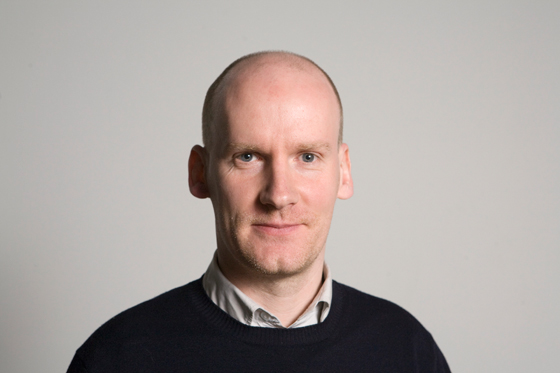
Sebastian Wrong: 'These aren't pieces that are used for five years and then thrown out. I think this is very important.'
×Your ceramic 'Bend' table, which is new to the collection, brought a smile to my face. In the right kind of way. Irony can be such powerful and often subversive quality in design. But it's hard to get it right. How much of the tongue-in-cheekness of Established & Sons' products is to do with your own personality or is it a more brand-driven strategy to differentiate the company as design label by drawing on the idea of British whimsy?
It's a mixture of the two. It comes from me and my personality. My view on the world. What I make and what I like and what I don't like. From a super simple perspective, the piece is about this one bend. It's this bent detail on the ceramic form which was informed by balloons. I'd been playing around with long, thin balloon sections, bending them and seeing the kink. The inflated section that swells out of that joint.
But it's also about the expected use of material.
Sure. I'd never worked in furniture with ceramic before, and it's opening up an area to me which has a lot of opportunities. With the transparent glazes, in particular their inconsistency and randomness. This is obviously very different to a paint finish, which is very homogenous. It's a controlled finish.
'Bend' side table by Sebastian Wrong for Established & Sons, 2010
Is it hard to relinquish that designerly control?
Not at all for me, because I'm often much more interested in what happens as a mistake than what happens in a controlled fashion. I think that comes from my background in art rather than design, which is to see how something evolves. A progression. What can emerge from an error.
Speaking of progression, is there a sense on your part of how the Established & Sons collection has developed over the last few years? Is there a logic to it?
Well, this year is a very important year for us. It's obviously a challenging time for the industry. We're launching the principal named designer collection and the ESTd brand-only collection, which is a new departure for us. The latter is geared up much more to online sales, a lower price point for the products, and diversifying into other materials and media – textile, glass, ceramics. It's a new area for us, which is exciting because it's more accessible. And that's important to consider that. It's been on the agenda for a while.
To what extent was the decision to launch a collection that is more modestly priced informed by the change in the international economy?
I'd be completely deluding myself if I thought that that wasn't a factor. (Laughs.) But also the shift to online purchasing now – it's a booming market. It's proved highly successful in fashion. Design now has to grown into it more. It's changed now from the retailers' position as well. Traditionally relying on the retailers to promote, present and invest in the collections, which is sometimes not the easiest thing to do.
'Lighthouse' lamp by Ronan and Erwan Bouroullec for Established & Sons in collaboration with Venini, 2010
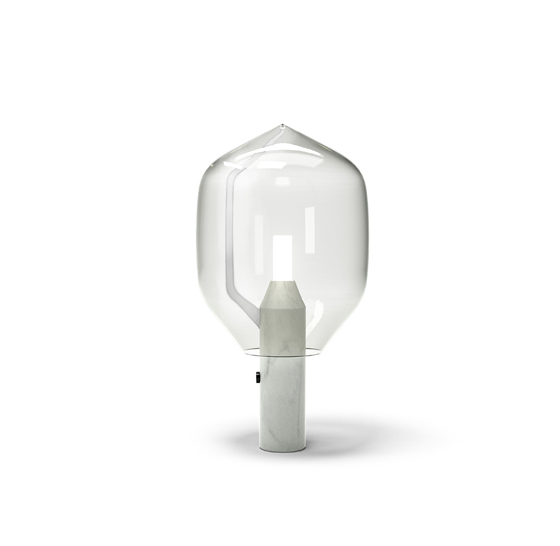
'Lighthouse' lamp by Ronan and Erwan Bouroullec for Established & Sons in collaboration with Venini, 2010
×There are obvious advantages of buying product design online, but do you not lose some of the magic and theatre of visiting a showroom, of interacting with the products? I mean, you're selling objects that the owners are, hopefully, going to be in real, physical contact with for a long time.
You're absolutely right. But it's about accessibility and convenience now for so many people. Perhaps you've seen the product somewhere in a showroom. You can have the luxury and ease of having the product delivered to your home without the stress and hassle of having to go into town and deal with all the other factors of life that are involved. This is the way forward.
How does introducing a more accessible, cheaper collection square with questions of sustainability and the environment? Shouldn't we be thinking about buying less. Buying fewer, better-designed products?
I absolutely subscribe to the opinion that there's no point contributing to an already excessive world of chairs and products, unless you've got something that really adds to it and doesn't just diversify into the endless oceans of mediocrity. I would argue that we don't produce mediocrity. Our pieces are built to last. They are not the cheapest by any means. But they are well-made and good quality pieces of design that stand the test of time. Therefore, these aren't pieces that are used for five years and then thrown out. I think this is very important.
'Butt' stool, part of Established & Sons' new Estd collection, 2010
What's your engagement, as a company, with sustainability?
We don't have a particular party line, as such, about who we were work with in terms of suppliers, etc. Obviously, we do it responsibly, but we're not on a level where we're dealing with a sufficient volume where we would really have to start to look into that. That point in time is a nice problem to deal with, and we will be able to deal with it. When that time comes, it's a very important factor to take into account. You just have to make sure that you are responsible.
OK. I look forward to seeing how you deal with this.
Established & Sons products demonstrate a technical strength, beyond their conceptual or aesthetic function. Presumably that helps to promote product longevity in terms of how long an object is kept.
Of course you can buy a wooden chair for £30, but that chair might not last you very long after a certain amount of use. But buy a wooden chair for £250 and it's going to last you a long, long time. The end of the day it's an economy of scale, and the reality is that it comes down to the materials that are used, and how can produce a chair for £20 and what materials you need to produce a good-quality chair for £250. There's no question about the difference in terms of standing the test of time.
'Buy cheap, buy twice', as my Irish granny used to say.
Buy cheap, buy more than twice. That's what I'd say.
Thanks very much, Sebastian.
.....
